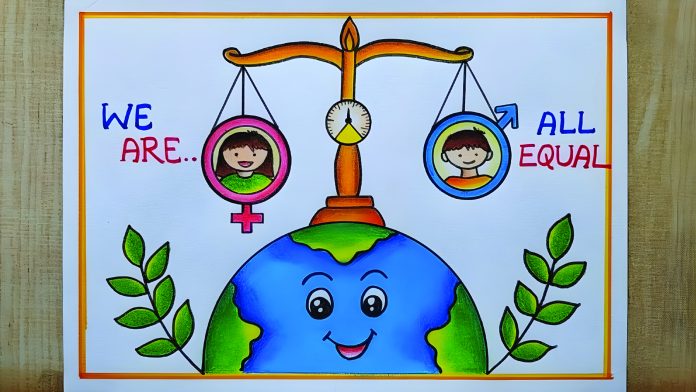Sadia Zahra
Women in Balochistan, Pakistan’s largest yet most underdeveloped province, face significant challenges to economic participation, which remain a critical but overlooked factor in the province’s persistent underdevelopment. Despite its wealth of natural resources and strategic geographic position, Balochistan continues to grapple with socio-economic disparities, especially for women.
Deeply ingrained cultural norms, structural barriers, and institutional shortcomings combine to limit women’s mobility, educational access, and employment opportunities. These challenges not only marginalize women but also deprive the province of their potential contributions to economic and social progress. Addressing this gap is essential for fostering a more equitable and prosperous Balochistan.
Cultural norms rooted in patriarchal and tribal traditions dictate strict gender roles in Balochistan. Women are expected to prioritize domestic responsibilities, while men dominate public and economic spheres. These roles are reinforced by societal expectations, religious interpretations, and tribal customs, leaving little room for women to engage in formal economic activities.
For many women, stepping out of the home to work or pursue education is seen as defiance against societal norms, leading to social stigma or even punitive actions in extreme cases. This cultural paradigm severely restricts women’s economic participation, reflected in a labor force participation rate of only 7.99%one of the lowest in Pakistan. A lack of education is a major factor, with female literacy at a mere 27%, compared to the provincial average of 42%.
Rural areas fare even worse due to limited access to schools, cultural resistance to female education, and inadequate infrastructure. Programs aimed at improving literacy often fail to account for these socio-cultural barriers, leaving millions of women trapped in cycles of illiteracy and dependency.
Institutional and structural factors further exacerbate these challenges. Existing laws and policies in Balochistan do little to support gender equality in the workplace. Women face restricted access to financial resources, vocational training, and entrepreneurial opportunities, all essential for professional advancement. Legal frameworks, where they exist, are poorly implemented, and workplace protections against harassment and discrimination are minimal at best.
The lack of safe public transportation and childcare facilities also discourages women from seeking employment. In urban centers such as Quetta, professional women still encounter workplace harassment and limited opportunities for career progression, while women in rural areas often have no access to formal jobs at all.
A mixed-methods study involving 250 women and 50 in-depth interviews highlights the lived experiences behind these statistics. Participants consistently cited cultural restrictions as a key barrier, with many reporting that societal expectations confined them to domestic roles. Unsafe public spaces and the need to seek male permission for basic activities further compounded their challenges.
Many professional women detailed instances of workplace harassment and a lack of support for career advancement. These narratives underscore how the deeply entrenched social and institutional barriers limit women’s economic agency, reinforcing systemic inequality.
The economic implications of this exclusion are profound. Women’s participation in the labor force is not merely a matter of equity; it has far-reaching consequences for household incomes, community development, and regional growth.
Research shows that when women earn, they invest disproportionately in their families, improving outcomes in education, health, and nutrition. Conversely, excluding women from the economy perpetuates poverty and hinders development. In Balochistan, where poverty rates are among the highest in Pakistan, the economic contributions of women could play a pivotal role in alleviating hardship and fostering resilience.
Overcoming these barriers requires a multi-faceted approach. Education must be prioritized as the foundation of women’s empowerment. Increasing access to schools, colleges, and universities, particularly in rural areas, and addressing cultural resistance to female education are essential. Building gender-sensitive infrastructure such as separate facilities for girls and safe transportation options could help overcome logistical barriers. Vocational training programs tailored to women’s needs would also equip them with the skills necessary to enter the workforce or start their own businesses.
Community engagement is equally important in challenging entrenched norms. Awareness campaigns that involve religious leaders, tribal elders, and male allies can promote the benefits of women’s economic participation. These campaigns should emphasize how empowering women leads to stronger families and communities, challenging the perception that women’s professional ambitions are at odds with traditional values. Engaging men as allies is particularly critical, as they often hold decision-making power in households and communities.
Institutional reforms must also be prioritized. Strengthening gender equality laws and ensuring their effective implementation would create safer and more inclusive workplaces. Policies that promote entrepreneurship, such as access to microfinance and mentorship programs, could provide women with the tools needed to succeed in business. Public infrastructure investments, such as safer transportation systems and affordable childcare, would further reduce barriers to economic participation.
While the challenges in Balochistan are significant, they are not insurmountable. The province’s untapped potential lies in its women, who represent half of its population. By addressing the systemic barriers to their economic participation, Balochistan can unlock new opportunities for growth, innovation, and resilience. Investing in women is not merely an ethical imperative; it is a strategic necessity for sustainable development. Inclusive economies are more productive, more innovative, and more resilient to shocks. For Balochistan, integrating women into the workforce could be a transformative step toward realizing its socio-economic potential.
As policymakers, community leaders, and stakeholders, consider the way forward, it is crucial to adopt a holistic and context-specific approach. Solutions must address not only the visible barriers, such as education and employment opportunities but also the invisible cultural and institutional constraints that perpetuate inequality. Efforts should be informed by the lived experiences of women in Balochistan, ensuring that policies are both effective and inclusive.
The path to gender equality in Balochistan will not be easy. It requires dismantling deeply entrenched norms, challenging power structures, and reimagining institutional frameworks. However, the rewards of such efforts are immense.
A more equitable Balochistan would not only uplift its women but also strengthen its economy, enrich its society, and enhance its global standing. As the province seeks to navigate its development challenges, empowering women must remain at the forefront of its agenda.
The author is a Researcher Assitant at Balochistan Think Tank Network (BTTN), Quetta.







